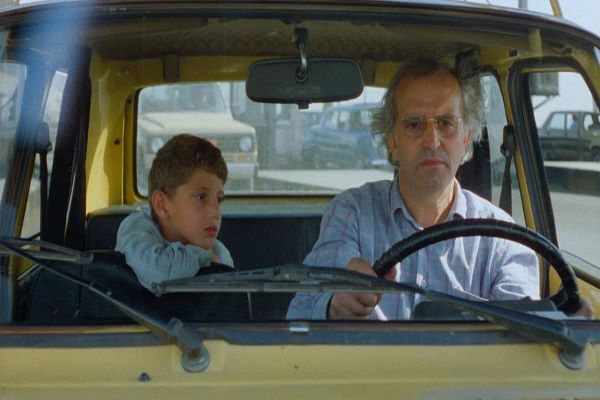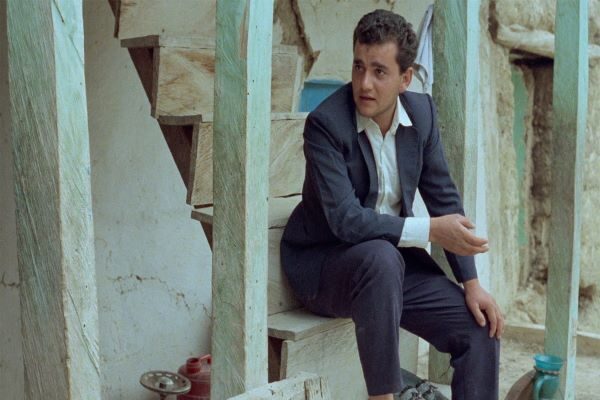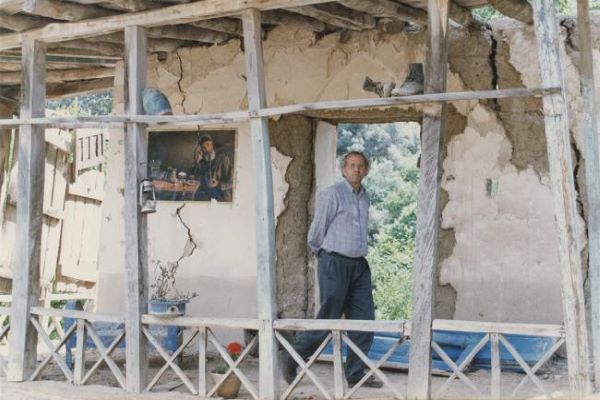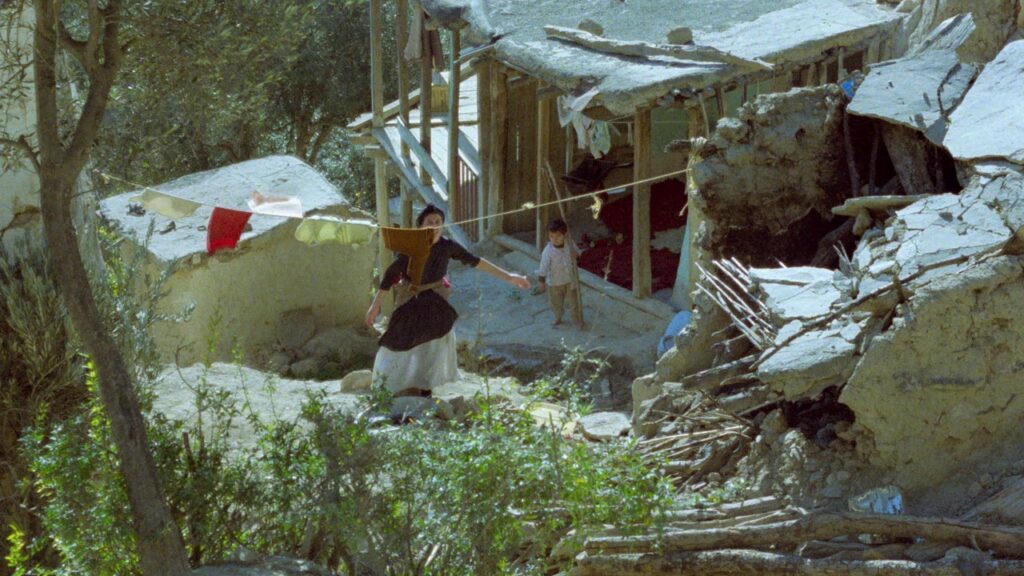Abbas Kiarostami’s Life and Nothing More… is the 2nd film of the Koker Trilogy. In this film, an alter ego of Kiarostami Farhad Kheradmand sets out for Koker by car with his adolescent son Pouya in search of the young actors featured in the first film of the Koker Trilogy Where Is the Friend’s Home?, and during the journey, he experiences the destruction caused by the 1990 Manjil-Rudbar earthquake. Even though the film shows the heavy destruction caused by the earthquake, it is not only about the destruction. The film tries to seek life and hope amidst destruction. Life and Nothing More… is a great study of human resilience and the preciousness of life.
Farhad Kheradmand who is an alter ego of Kiarostami sets out for Koker from Tehran by car with his adolescent son Pouya just a few days after the devastating Manjil-Rudbar earthquake. Initially, he drives on the highway and experiences the damages caused by the earthquake. They stop for a bio-break and Pouya starts catching grasshoppers beside the highway and releases them a little later. They meet few local people and ask them about the road to Koker. After changing several routes, they follow a different road to Koker due to a heavy traffic jam as the rescue operations are going on. On the way, Farhad meets an old actor featured in Where Is the Friend’s Home? and drives him to his village. A few scenes of Where Is the Friend’s Home? were shot in that village.

Farhad comes to know from the old man that he was not happy with his make-up, which made him look older, in Where Is the Friend’s Home?. He opines that true art should make somebody look younger. Farhad meets the villagers and experiences the damages. Pouya tells a village woman that God never hurts people. It was the earthquake demon that caused the damages. Farhad meets a newly married couple in the village. The husband named Hossein Rezai tells him that they got married the next day after the earthquake. He says that there is no point in lingering the mourning, and life must go on. This incident is the central story of Kiarostami’s next film and the final film of the Koker Trilogy – Through the Olive Trees. Farhad starts driving his car again for Koker.
On the way, they meet a young actor Mohammad Reza Parvaneh who appeared in Where Is the Friend’s Home?. Farhad takes him into his car and drives to the tent where he and his family members are staying after their house was destroyed by the earthquake. Many homeless people from the nearby villages are staying there under tents. Pouya and Parvaneh start debating on the possible winner of the world cup match between Brazil and Germany. A villager is seen setting up the antenna for the live telecast of the world cup match on television. The villager informs Farhad that the Ahmadpour brothers have just crossed that place and are on the way to Koker. Pouya requests his father to allow him to watch the football match there on the television. Parvaneh and his sister make the same request to Farhad. He starts driving to Koker keeping Pouya there. As the car approaches on the hilly way, the engine gets heated up and the car stops. A villager with a gas cylinder pushes the car and the car gets started again. Two boys seemingly the Ahmadpour brothers are seen walking up the hill. A little later, Farhad starts driving again and on the way, takes the villager into his car. As the car keeps going up the hilly way, the credit rolls on the screen.

In Life and Nothing More…, Abbas Kiarostami keeps searching for life amidst destruction. Kiarostami made Where Is the Friend’s Home? in Koker. The actors including the Ahmadpour brothers were mostly from Koker and surrounding villages. The 1990 Manjil-Rudbar earthquake largely damaged those areas. More than 40000 inhabitants were killed by the devastating earthquake. Countless villagers lost their loved ones and houses. Innumerable children became orphans. They almost lost everything and started staying temporarily under tents. As an artist, Kiarostami felt for the miseries and agonies of those villagers including the actors of Where Is the Friend’s Home?. He could not sit idle at home, rather he came forward to experience the damages caused by the earthquake.
Life and Nothing More… is Kiarostami’s effort and intention to meet those unfortunate people and experience the devastation. Even though the film shows that the filmmaker is driving to Koker to meet Babak Ahmadpour who was the lead actor of Where Is the Friend’s Home? actually, he is driving to meet all those people who were greatly affected by the earthquake. Irrespective of the devastations, this film always tries to seek hope and life. There was a scene where Farhad’s vision goes beyond the broken door and reaches out to the green trees on the hill. The village women have started doing their daily household works. An old lady who has lost her husband due to the earthquake is about to make tea. Farhad helps her in finding out the kettle. Hussein Rezai has got married just after the earthquake. The villagers are geared up for the world cup football match. All of these show that people are all set to live their lives again. There is no point in mourning during the sunset. It is wise to hope and wait for the sunrise. Even though it features sunset, Life and Nothing More… is a story of sunrise. The film shows how life must go on no matter how immensely it gets crumbled. Kiarostami shows the innocence of childhood when Pouya gets off the car and catches a grasshopper. Farhad plays with a baby who is kept open under the trees. Overall, the Koker Trilogy including Life and Nothing More… celebrates and portrays the preciousness of life.

Like multiple Kiarostami films, Life and Nothing More… is a docufiction. It is neither a full documentary nor entirely fiction, rather it is a mixture of both. In fact, The film was shot not immediately but a few months after the earthquake. As a filmmaker, Kiarostami opened his heart out and reached out to the helpless rural Iranians through this film. Filmmaking cannot be more original. Homayun Payvar’s camera truthfully captured the most devastating pictures of the earthquake. Life and Nothing More… was selected in the Un Certain Regard section at the 1992 Cannes Film Festival.
